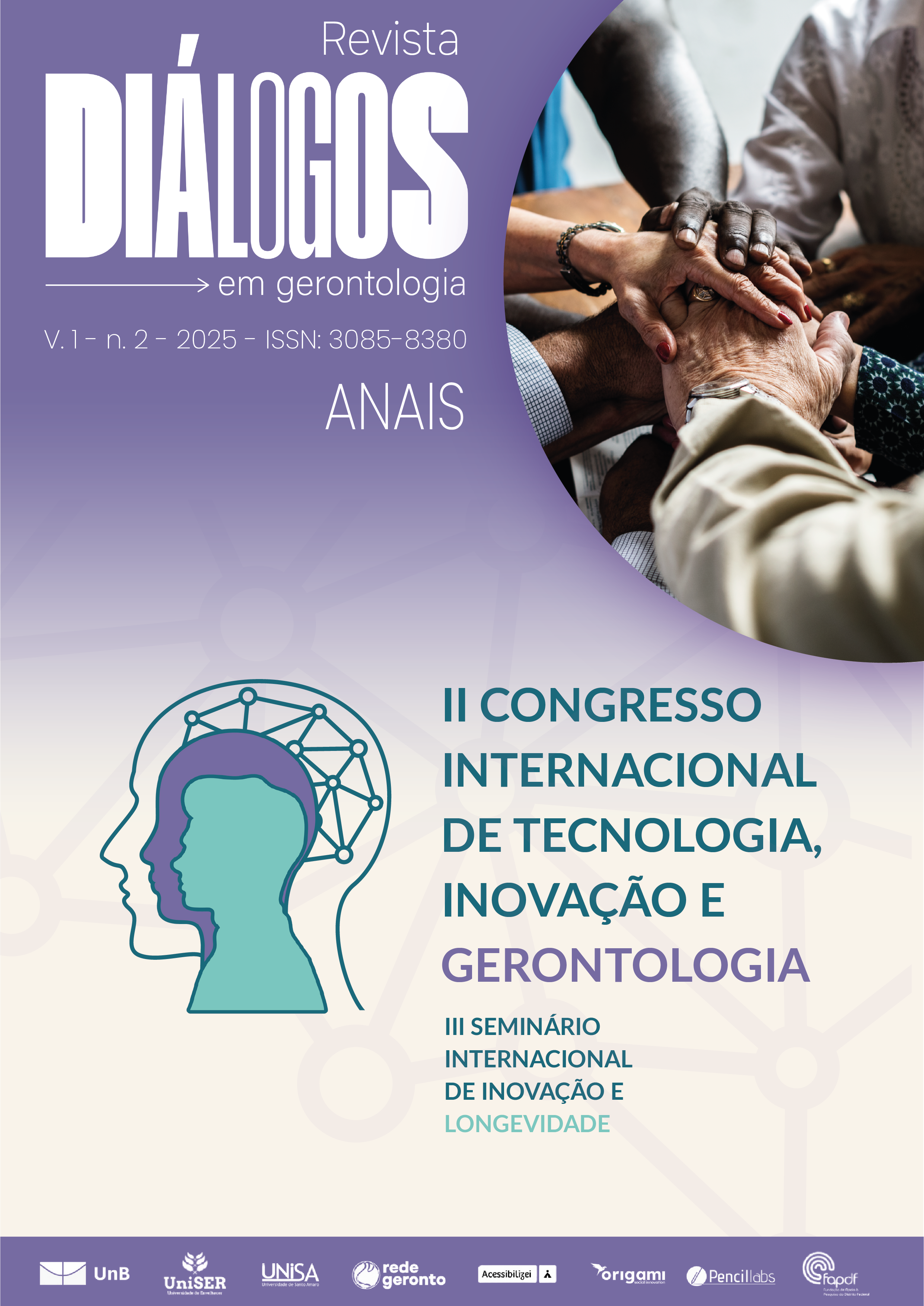LIPID PROFILE OF OLDER ADULTS WITH CHRONIC DISEASES
Resumo
Background: Population aging is a significant demographic trend, resulting in a global increase in the elderly population and raising important public health concerns. Among these is the growing prevalence of chronic non-communicable diseases (NCDs), particularly diabetes mellitus (DM) and hypertension (HTN). These conditions are often accompanied by dyslipidemia—abnormal levels of blood lipids—which increases morbidity and mortality, especially from cardiovascular diseases, the leading cause of death worldwide. Since dyslipidemia is a modifiable risk factor, understanding its prevalence and associated factors in older adults is essential for preventive care. Purpose: This study aimed to evaluate the lipid profile of older adults diagnosed with hypertension and/or diabetes mellitus in a primary healthcare setting. Methods: A cross-sectional, descriptive study with a quantitative approach was conducted at a Basic Health Unit in the Federal District, Brazil. The sample consisted of 110 older adults (≥60 years) with a medical diagnosis of hypertension and/or type 2 diabetes. Participants were registered at the unit and cognitively able to respond to study questions. Data collection involved sociodemographic and clinical information, anthropometric measures (waist and calf circumference, weight, height), body composition analysis using electrical bioimpedance (Inbody® 570), and fasting blood tests for biochemical analysis. Dyslipidemia was defined according to the 2017 Brazilian Guideline for Dyslipidemia and Atherosclerosis Prevention. Statistical analysis was conducted using SPSS 25.0, adopting p<0.05 as the significance level. Results: Dyslipidemia was present in 55.5% of the participants. The most common lipid alteration was isolated hypertriglyceridemia (31.8%), followed by low HDL (10.9%), isolated hypercholesterolemia (10.0%), and mixed hyperlipidemia (10.0%). Most participants were female (82.7%), retired (83.6%), and had less than nine years of education (54.5%). Hypertension was present in 88.2% of participants, and diabetes in 63.6%. Dyslipidemia was significantly associated with higher family income (p=0.029), increased body fat percentage (p=0.043), larger waist circumference (p=0.041), and shorter duration of hypertension (p=0.014). Biochemical associations included lower HbA1c (p=0.033) and higher fasting glucose levels (p=0.001). Isolated hypertriglyceridemia, the most prevalent condition, was associated with higher BMI (p=0.025), larger waist circumference (p=0.001), elevated HbA1c (p=0.001), and fasting glucose (p<0.001).
Furthermore, diabetes was significantly associated with the presence of hypertriglyceridemia (p=0.044), indicating a strong metabolic link between the conditions. Conclusion: There is a high prevalence of dyslipidemia among older adults with chronic diseases, especially hypertriglyceridemia, which is strongly associated with diabetes and markers of central obesity. The findings underscore the importance of body composition and metabolic control in managing lipid abnormalities in this population. Implications: These results support the need for integrated, multidisciplinary care strategies in primary health settings. Monitoring lipid profiles and addressing modifiable risk factors such as obesity and poor glycemic control are essential. Healthcare providers should focus on personalized care plans that consider the complex interplay between diabetes, hypertension, dyslipidemia, and nutritional status to reduce cardiovascular risks and improve quality of life in older adults.
Downloads
Publicado
Edição
Seção
Licença
Copyright (c) 2025 Revista Diálogos em Gerontologia

Este trabalho está licenciado sob uma licença Creative Commons Attribution-NonCommercial 4.0 International License.
A Revista oferece acesso livre e imediato ao seu conteúdo, em consonância com o princípio de que tornar o conhecimento científico amplamente disponível contribui para a democratização do saber. Os(as) autores(as), ao submeterem seus trabalhos, declaram-se detentores(as) dos direitos autorais e autorizam seu uso livre, desde que sem fins comerciais, com obrigatoriedade de atribuição de crédito apropriado à autoria original. Os conteúdos podem ser lidos, baixados, copiados, distribuídos e impressos, conforme os termos da licença Creative Commons Atribuição-NãoComercial 4.0 Internacional (CC BY-NC 4.0).





